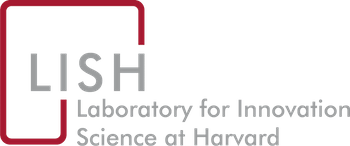Metrology plays a key role in the manufacture of mechanical components. Traditionally it is used extensively in a pre-process stage where a manufacturer does process planning, design, and ramp-up, and in post-process off-line inspection to establish proof of quality. The area that is seeing a lot of growth is the in-process stage of volume manufacturing, where feedback control can help ensure that parts are made to specification. The Industrial Metrology Group at Carl Zeiss AG had its traditional strength in high precision coordinate measuring machines, a universal measuring tool that had been widely used since its introduction in the mid-1970s. The market faced a complex diversification of competition as metrology manufacturers introduced new sensor and measurement technologies, and as some of their customers moved towards a different style of measurement mandating speed and integration with production systems. The case discusses the threat of new in-line metrology systems to the core business as well as the arising new opportunities.
Innovation Theory
. 2011. TopCoder (B). Harvard Business School Case Supplement. Harvard Business School. Publisher's VersionAbstract
. 2017. “Firms, Crowds, and Innovation.” Strategic Organization, 15:2, Special Issue on Organizing Crowds and Innovation, Pp. 119-140. Publisher's VersionAbstract
. 2012. “Let a Thousand Flowers Bloom? An Early Look at Large Numbers of Software App Developers and Patterns of Innovation.” Organization Science, 23, 5, Pp. 1409-1427. Publisher's VersionAbstract
. 2011. Innovation and the Challenge of Novelty: The Novelty-Confirmation-Transformation Cycle in Software and Science. Harvard Business School Publishing. Publisher's VersionAbstract
. 2010. “Open Platform Strategies and Innovation: Granting Access vs. Devolving Control.” Management Science, 56, 10, Pp. 1849-1872. Publisher's VersionAbstract
. 2011. TopCoder (A): Developing Software through Crowdsourcing (TN). Harvard Business School Teaching Notes. Harvard Business School. Publisher's VersionAbstract
. 2016. “Innovation Experiments: Researching Technical Advance, Knowledge Production, and the Design of Supporting Institutions.” In Innovation Policy and the Economy, 16: Pp. 135-167. Chicago, IL. Publisher's VersionAbstract
. 2012. “The Confederacy of Heterogeneous Software Organizations and Heterogeneous Developers: Field Experimental Evidence on Sorting and Worker Effort.” In The Rate and Direction of Inventive Activity Revisited, . Chicago, IL: University of Chicago Press. Publisher's VersionAbstract
. 2010. “Marginality and Problem-Solving Effectiveness in Broadcast Search.” Organization Science, 21, 5, Pp. 1016-1033. Publisher's VersionAbstract
. 2013. “Open Innovation and Organizational Boundaries: Task Decomposition, Knowledge Distribution and the Locus of Innovation.” In Handbook of Economic Organization: Integrating Economic and Organizational Theory, , Pp. 355-382. Edward Elgar Publishing, Inc. Publisher's VersionAbstract
. 2009. “Platform Rules: Multi-sided Platforms as Regulators.” In Platforms, Markets, and Innovation, . Northampton, MA: Edward Elgar Publishing, Inc. Publisher's VersionAbstract
. 2015. Innovating with the Crowd. Harvard Business School Case. Harvard Business School. Publisher's VersionAbstract
. 2016. Revolutionizing Innovation: Users, Communities, and Open Innovation. Cambridge, MA: MIT Press. Publisher's VersionAbstract
. 2011. “Incentives and Problem Uncertainty in Innovation Contests: An Empirical Analysis.” Management Science, 57, 5, Pp. 843-863. Publisher's VersionAbstract
